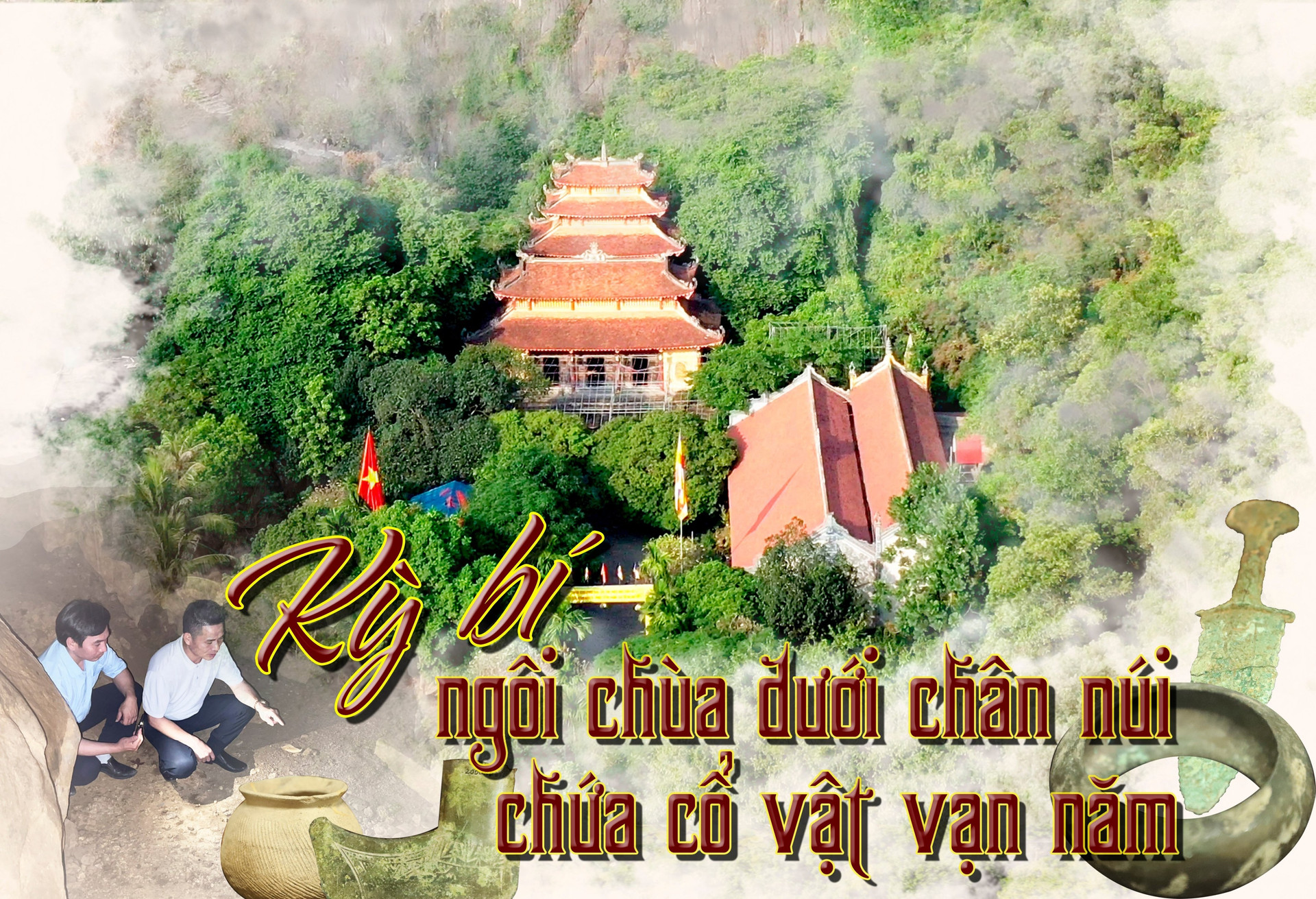
Nham Duong Pagoda is located on the mountain range of the same name. The pagoda is hidden among the vast green trees all year round and a rare and interesting cave complex. Around this pagoda, people have discovered dozens of large and small caves with names such as Thanh Hoa, Tinh Niem, Toi, Bo Le, Ma, Mat, Thung Xanh, Chuong, Trong, Luon... The complex of mountains and cave systems here surround the pagoda, stretching like a "curving dragon, prostrating elephant" harmoniously all the way to Mao Khe, Dong Trieu, connecting to Yen Tu mountain range (Quang Ninh). In front of the pagoda, there are dozens of rocky mountains, hills, and mounds. What is special is that their peaks all lean towards Nham Duong Pagoda. "Many good geomancers have been here and have the same comment that the spiritual energy here is very dense and rare. This also explains why the founder chose this place to build a pagoda to practice Buddhism in the past," said nun Thich Dieu Mo, abbot of Nham Duong Pagoda.
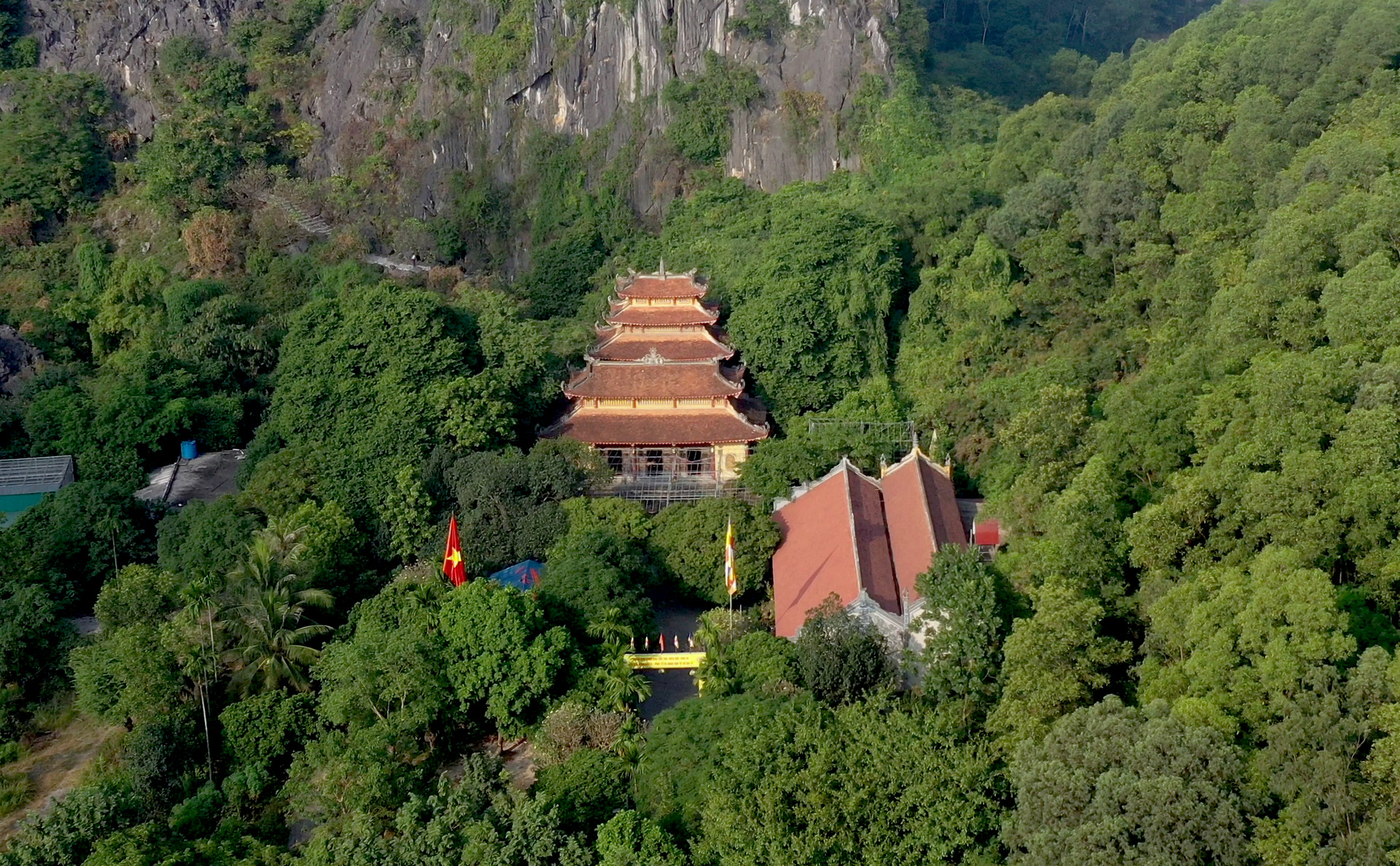
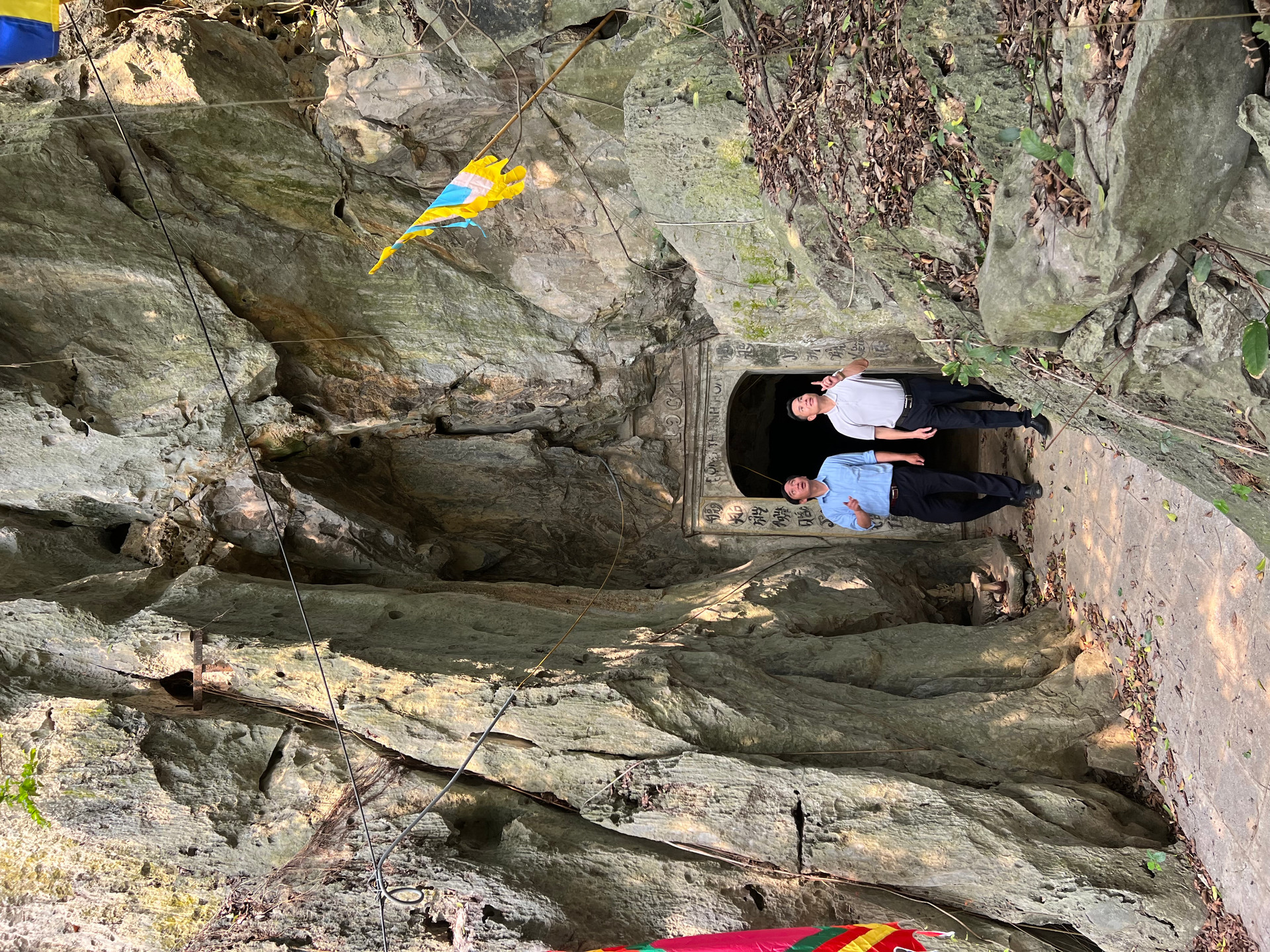
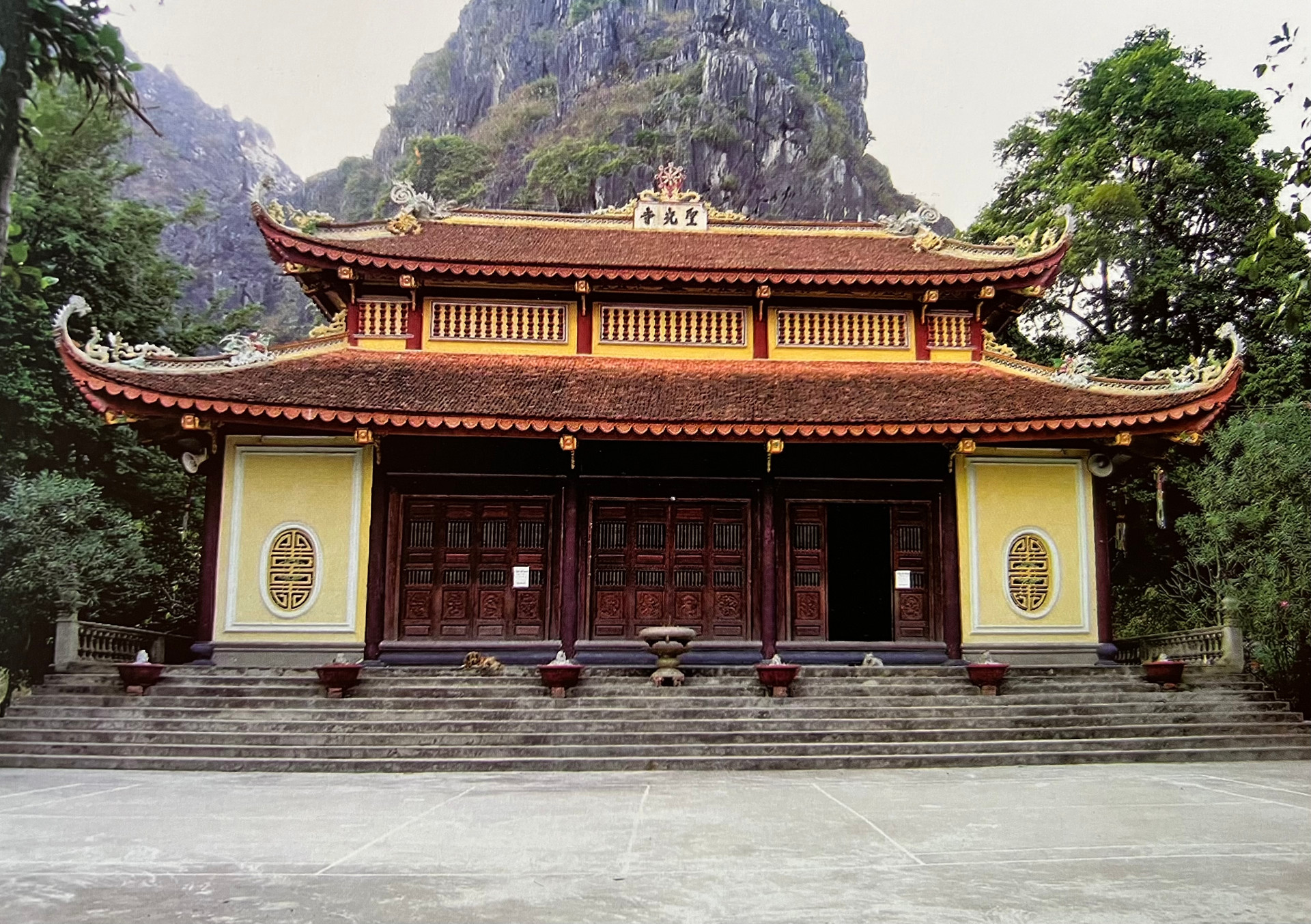
According to many historical documents, Nham Duong Pagoda was built during the Tran Dynasty (13th century), and restored during the Le and Nguyen Dynasties. During the two resistance wars against France and the US, the pagoda and the surrounding cave system became a revolutionary base, hiding weapons and food for soldiers... This pagoda was forced to burn to the ground to serve the resistance after being discovered by the enemy. In 1954, local people and Buddhists rebuilt the pagoda with bamboo and thatch. In 1960-1961, Venerable Thich Vo Vi returned to preside over the pagoda and together with Buddhists and people built a temporary temple in the shape of the letter "Dinh" using mainly stone, lime, bamboo roof and red tiles. In 1996, Nham Duong Pagoda was seriously degraded, and Buddhist nun Thich Dieu Mo stood up and mobilized Buddhists near and far to rebuild it on the old foundation. The pagoda is quite impressive in scale with a pure Vietnamese architecture of the letter Cong, including 5 front rooms, 2 tube rooms, and 3 back rooms. The 5 front rooms worship Buddha King Tran Nhan Tong (the first patriarch of the Truc Lam Zen sect), Zen master Thong Giac Thuy Nguyet (the first patriarch of the Cao Dong Zen sect in Vietnam) and Zen master Tong Dien (the second patriarch of the Cao Dong Zen sect in Vietnam). In addition to the main hall, in the grounds of Nham Duong pagoda, there is also an ancestral shrine, a tower garden, a tomb garden, etc.
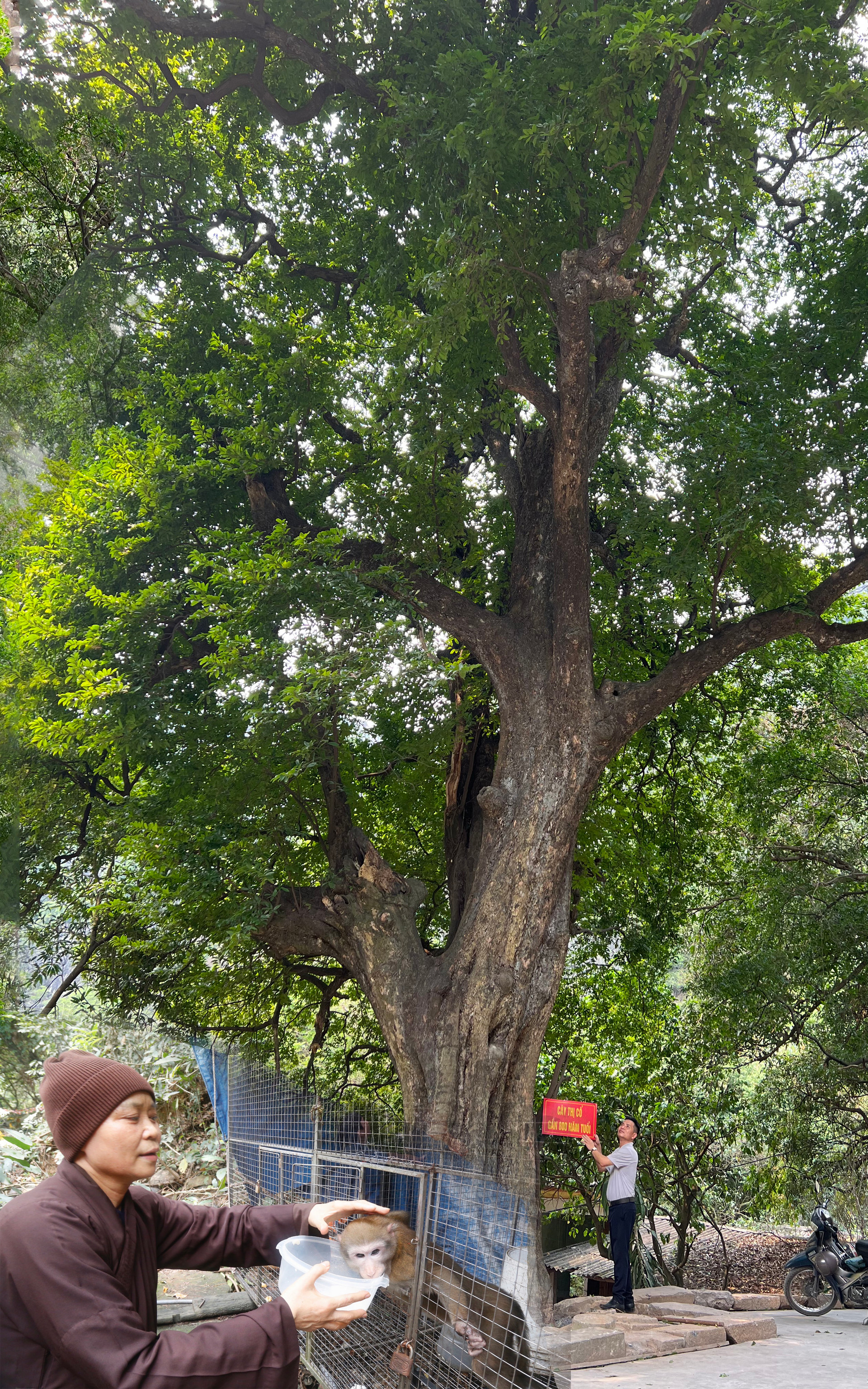
Not only is Nham Duong Pagoda surrounded by a system of rocky mountains and caves, it is also covered in greenery by nearly 250 different types of plants. There are still many natural animals living here, notably a herd of more than 30 monkeys that are still being cared for and preserved by nun Thich Dieu Mo.
The Nham Duong Pagoda Festival takes place annually from the 5th to the 7th of the third lunar month to commemorate the day the National Master Dao Nam Thong Giac Thuy Nguyet entered nirvana. The festival has many unique rituals such as water procession, incense offering, praying for national peace and prosperity, and Mong Son food offering. The festival includes chess competitions, folk games, and cultural exchanges...
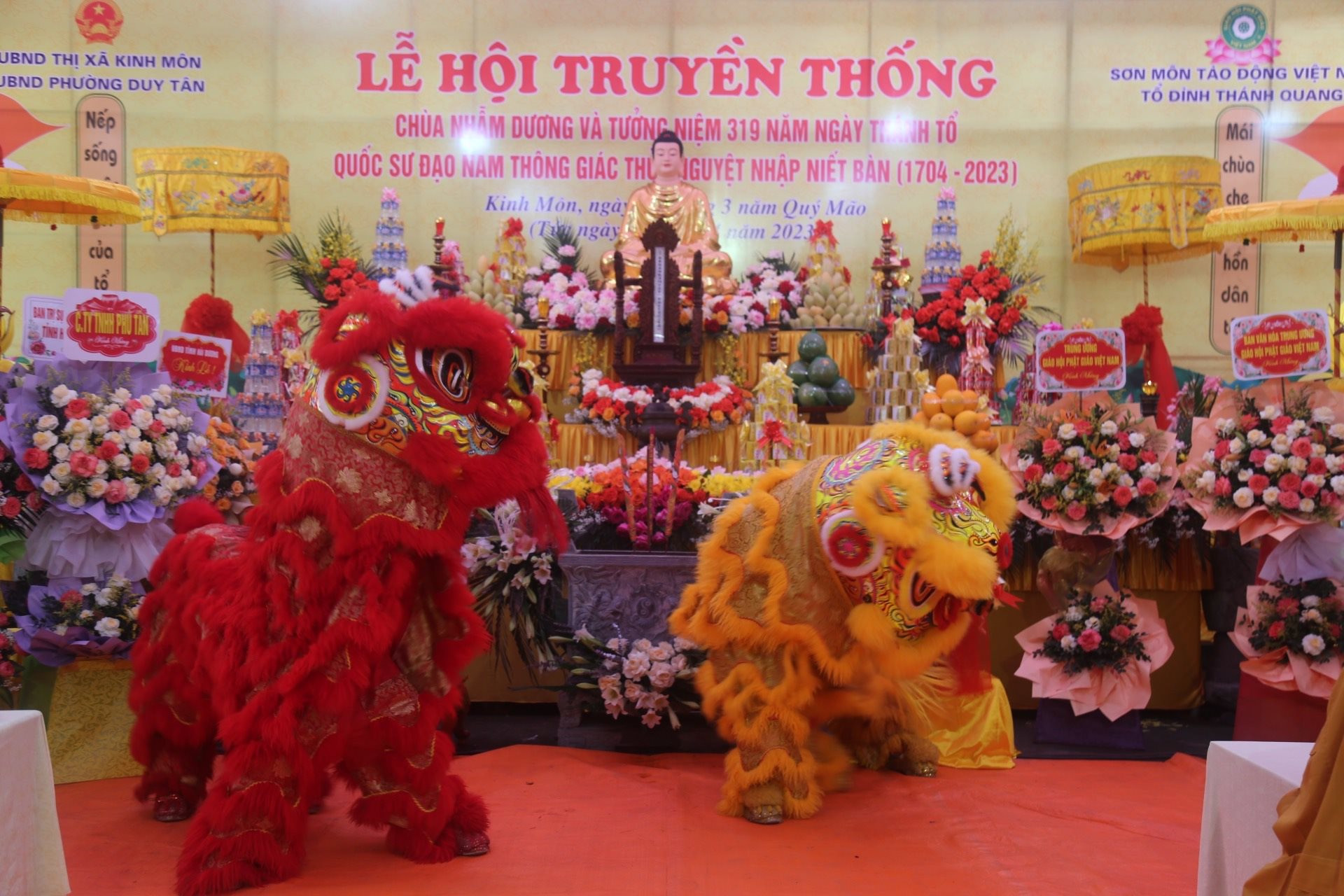
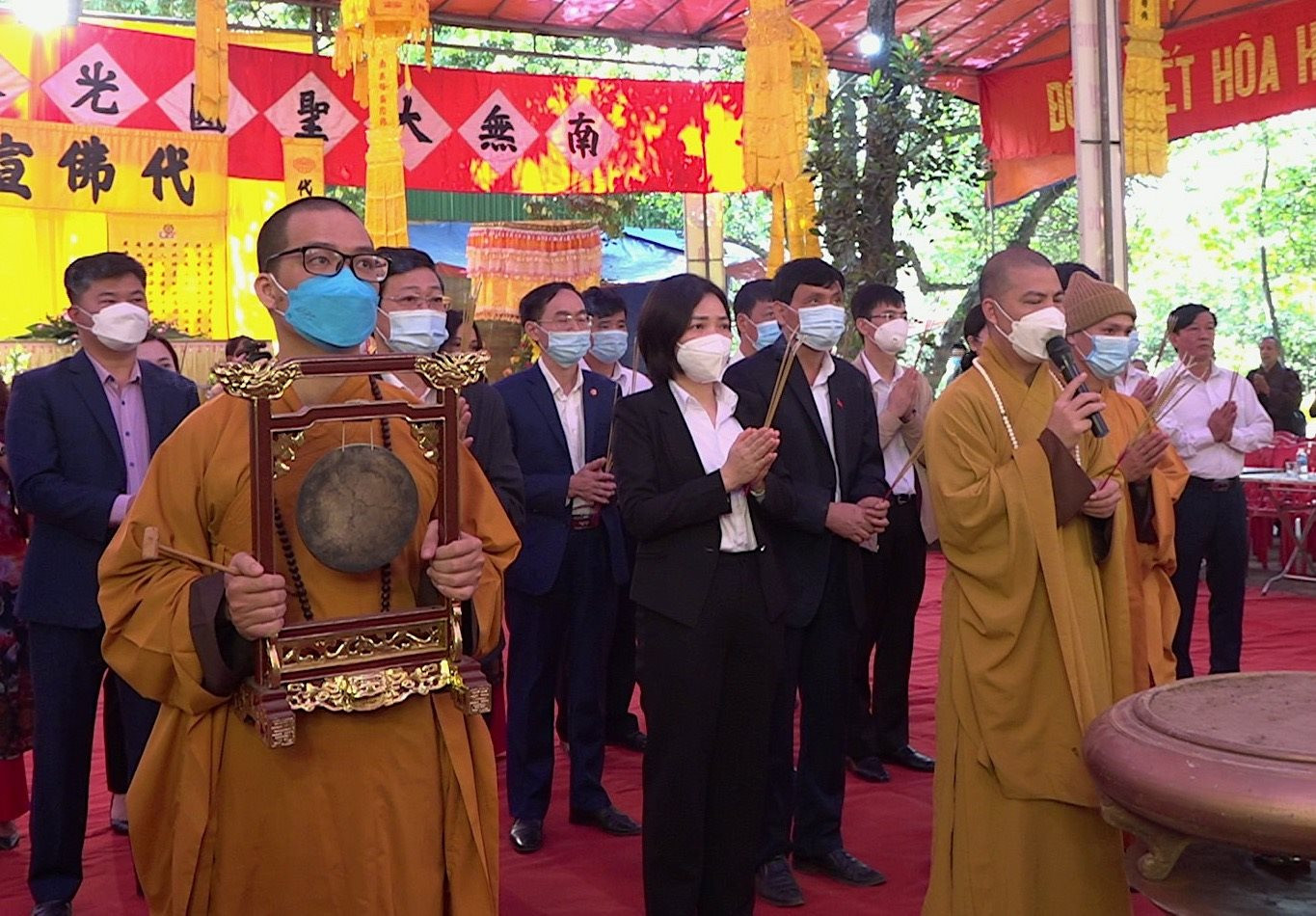
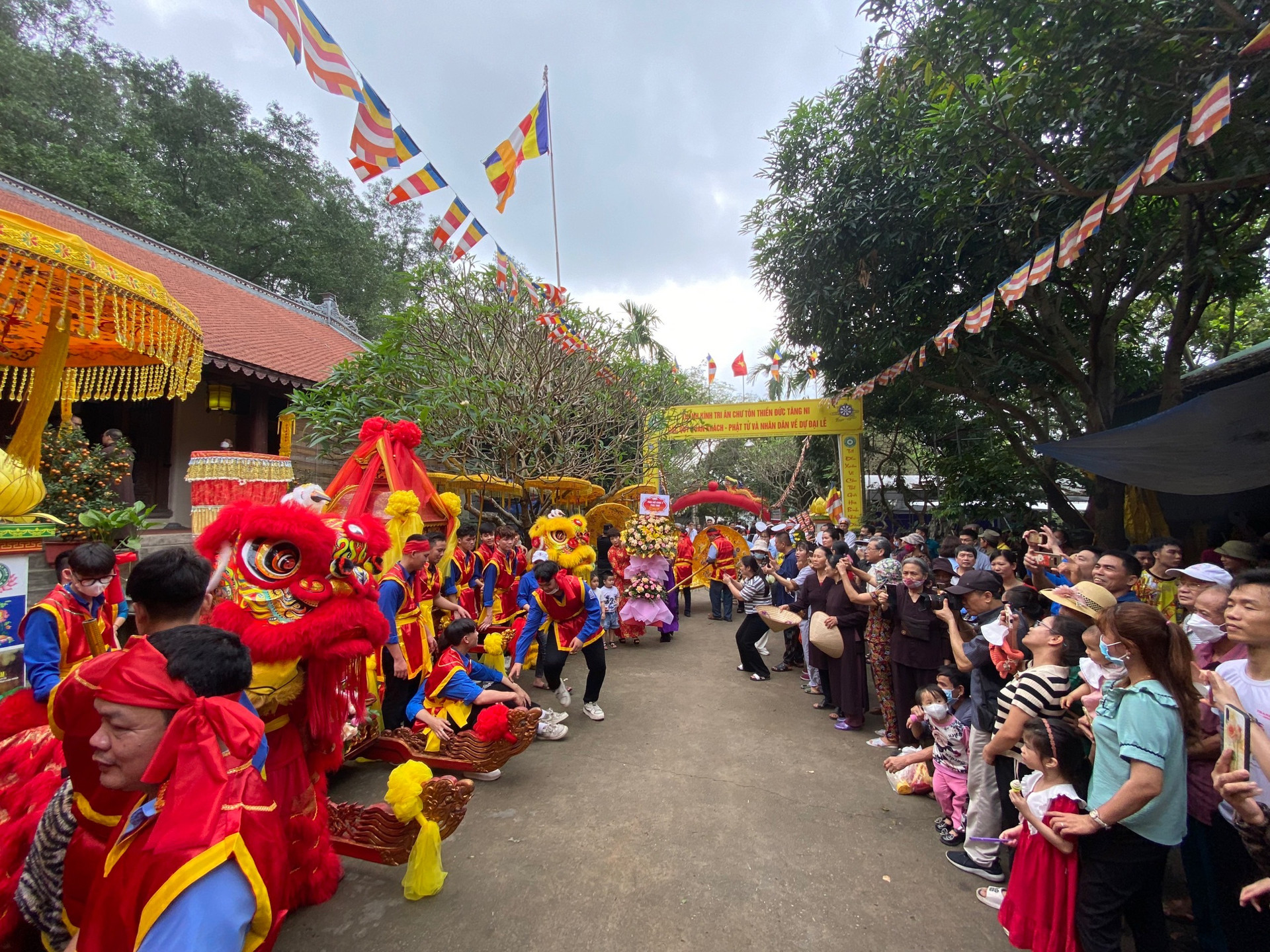
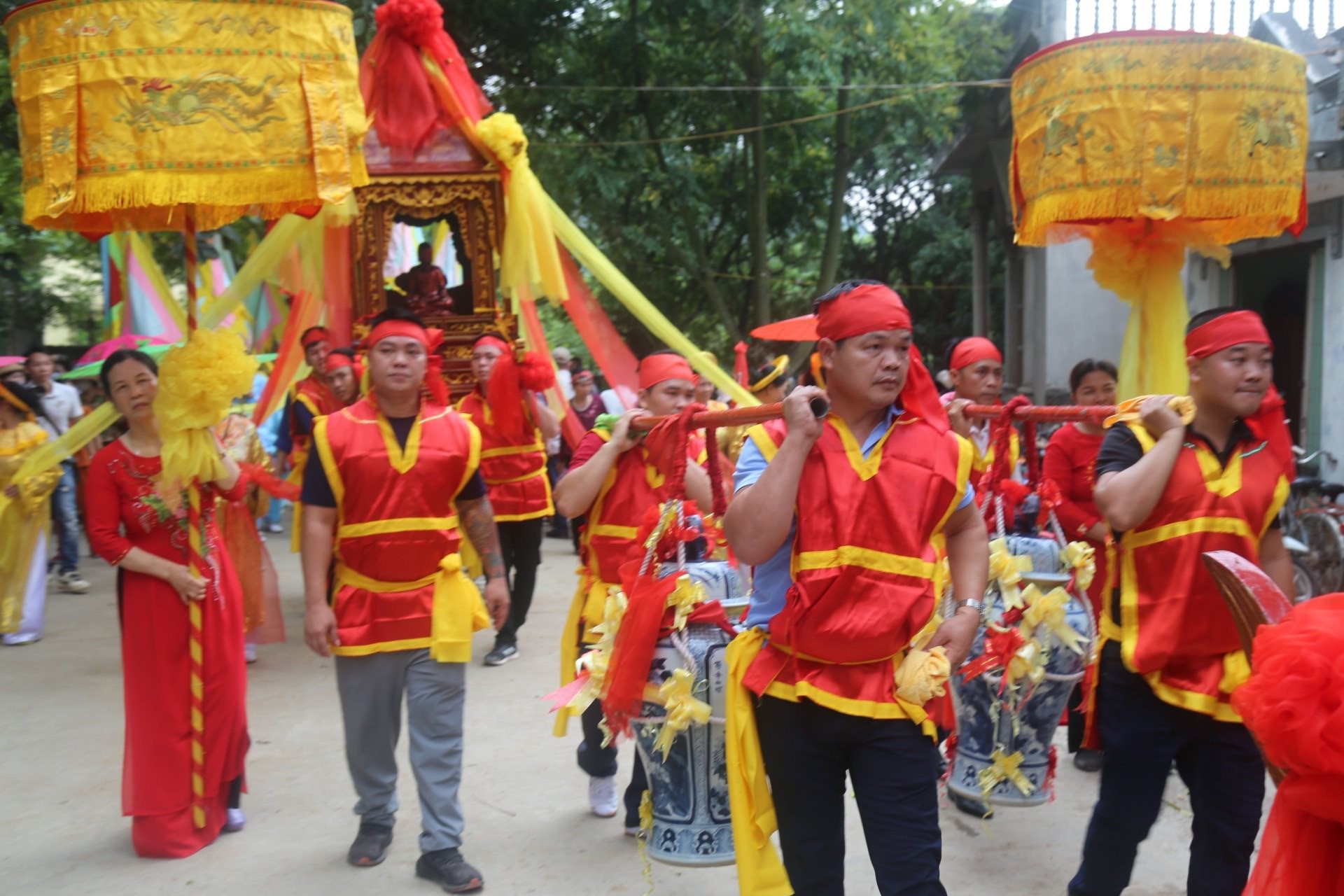
On October 29, 2003, Thanh Quang Pagoda was recognized as a national historical and cultural relic by the Ministry of Culture and Information (now the Ministry of Culture, Sports and Tourism). On December 22, 2016, along with the historical and scenic relic complex of An Phu and Kinh Chu, Nham Duong Pagoda was recognized as a special national relic by the Prime Minister.
Many domestic and foreign tourists when visiting Nham Duong Pagoda were amazed by the archaeological discoveries here. In the ancestral shrine of this pagoda, thousands of artifacts are preserved and displayed, proving a continuous historical process throughout the late Canh Tan period, through the Paleolithic, Neolithic, and Metal Ages to the Ly, Tran, Le, and Nguyen Dynasties. Those artifacts include many types of human and animal remains and fossils, primitive stone tools to Dong Son bronze, pottery, ancient coins, etc. Archaeologists consider Nham Duong Pagoda an "archaeological treasure". In Vietnam, there are very few archaeological sites with such special value as this pagoda.
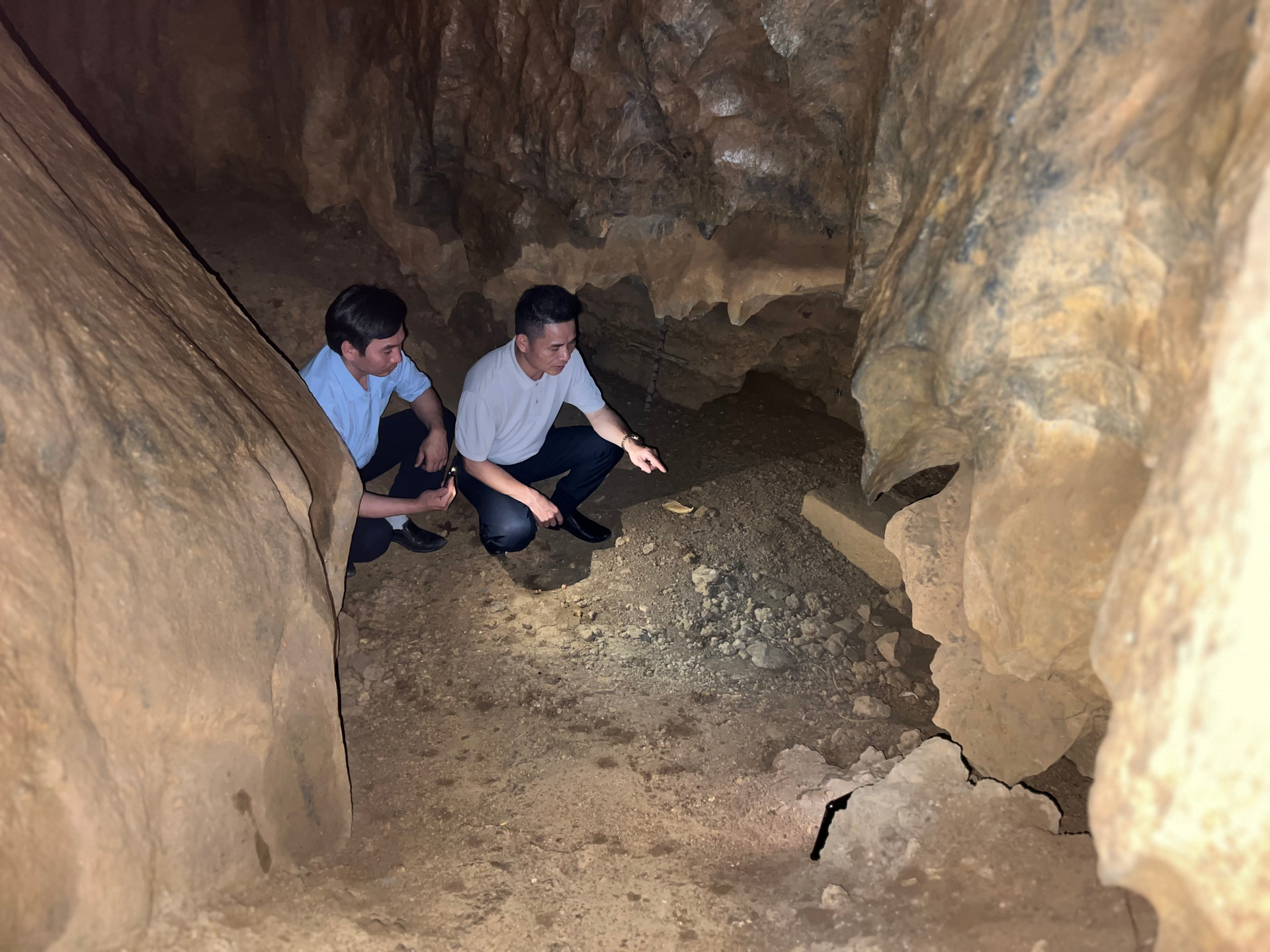
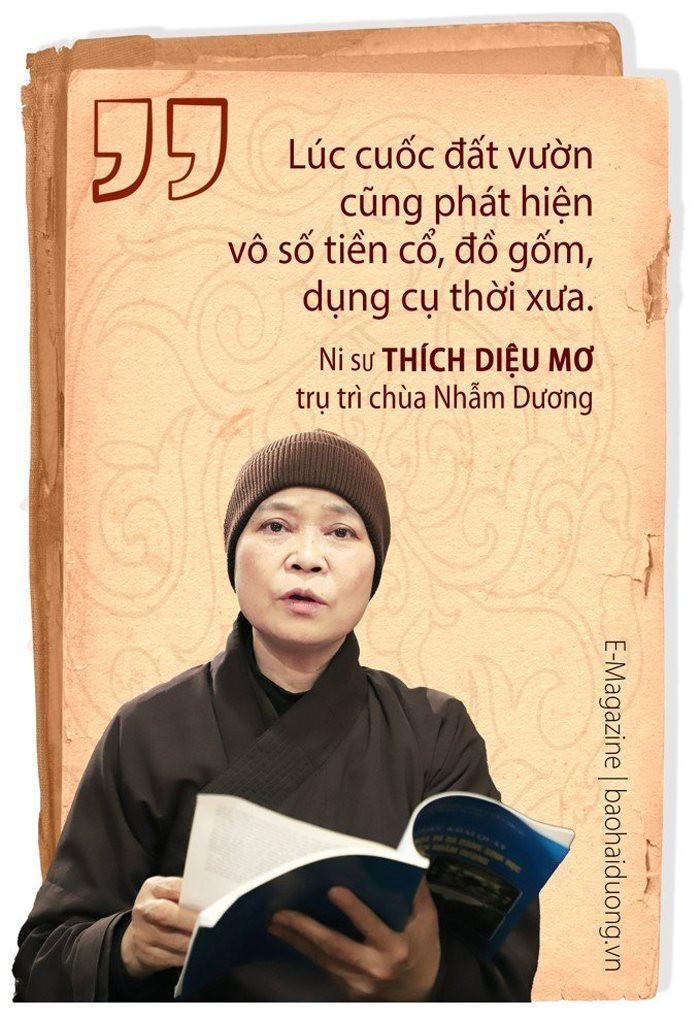
Nun Thich Dieu Mo was the one who discovered the first archaeological artifacts at Nham Duong Pagoda. “It was a coincidence. From 1999-2000, while digging Tinh Niem Cave to find statues to serve the restoration and embellishment of the pagoda according to the instructions of the previous abbot, I saw many large and small teeth clinging tightly to the cliff. I thought these were soldiers’ teeth so I collected them to hold a prayer ceremony. While digging the garden soil, I also discovered many ancient coins, pottery, and ancient tools…”, recalled Nun Thich Dieu Mo.
The exploration, excavation and research at Nham Duong Pagoda were conducted by Hai Duong Provincial Museum in coordination with the Vietnam Institute of Archaeology immediately afterwards with the participation of many famous Vietnamese archaeologists.
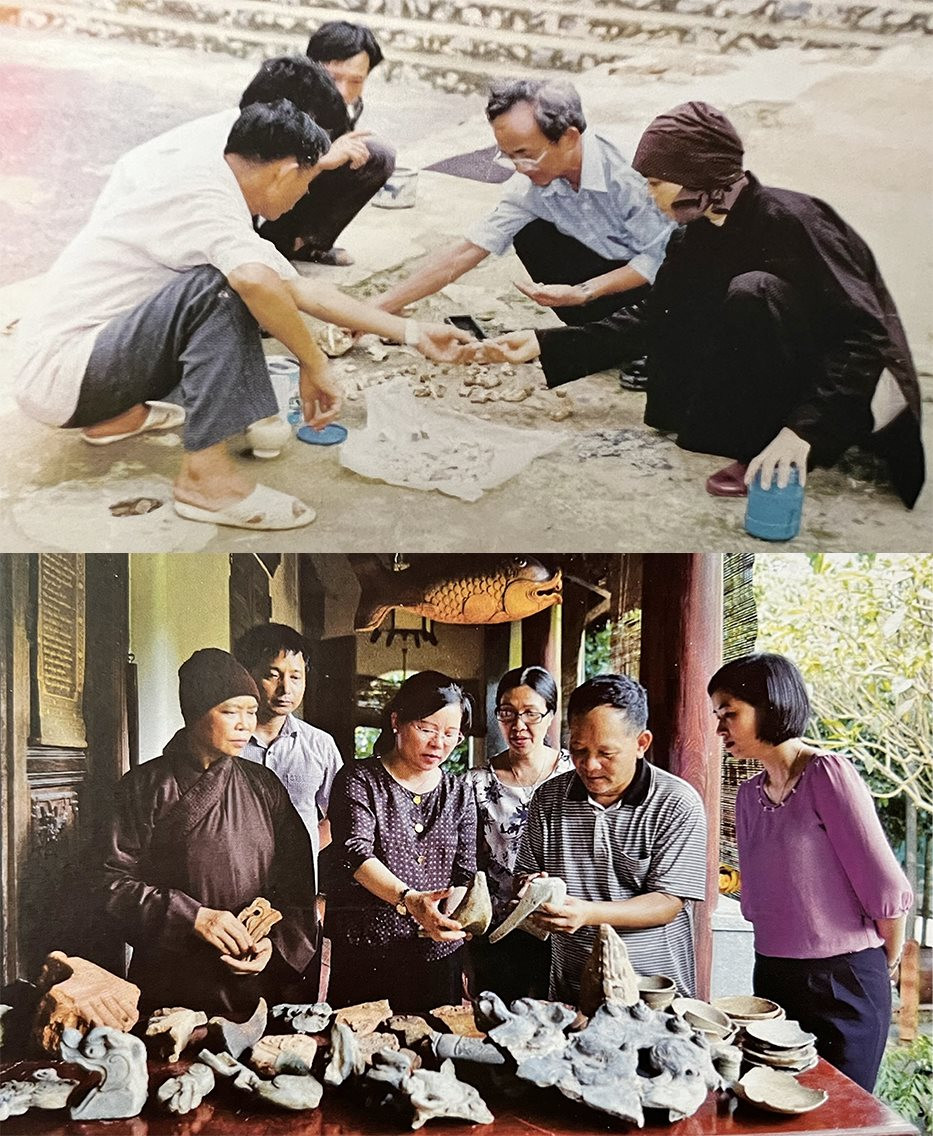
In Thanh Hoa Cave alone, in a short time, archaeologists discovered and studied 471 fossil bone and tooth samples of humans and animals. Based on the fauna, sediments and cave location, the research team from the Institute of Archaeology and the Provincial Museum estimated that the fossils in Nham Duong belonged to the late Canh Tan period, possibly from about 50,000 to 30,000 years ago. “Oh my god! Pongo teeth! Associate Professor, Dr. Nguyen Lan Cuong shouted with joy when I gave him the fossil tooth of an orangutan. There were also 3 foreign visitors who came here and were fascinated by the artifacts displayed at the pagoda,” said nun Thich Dieu Mo.
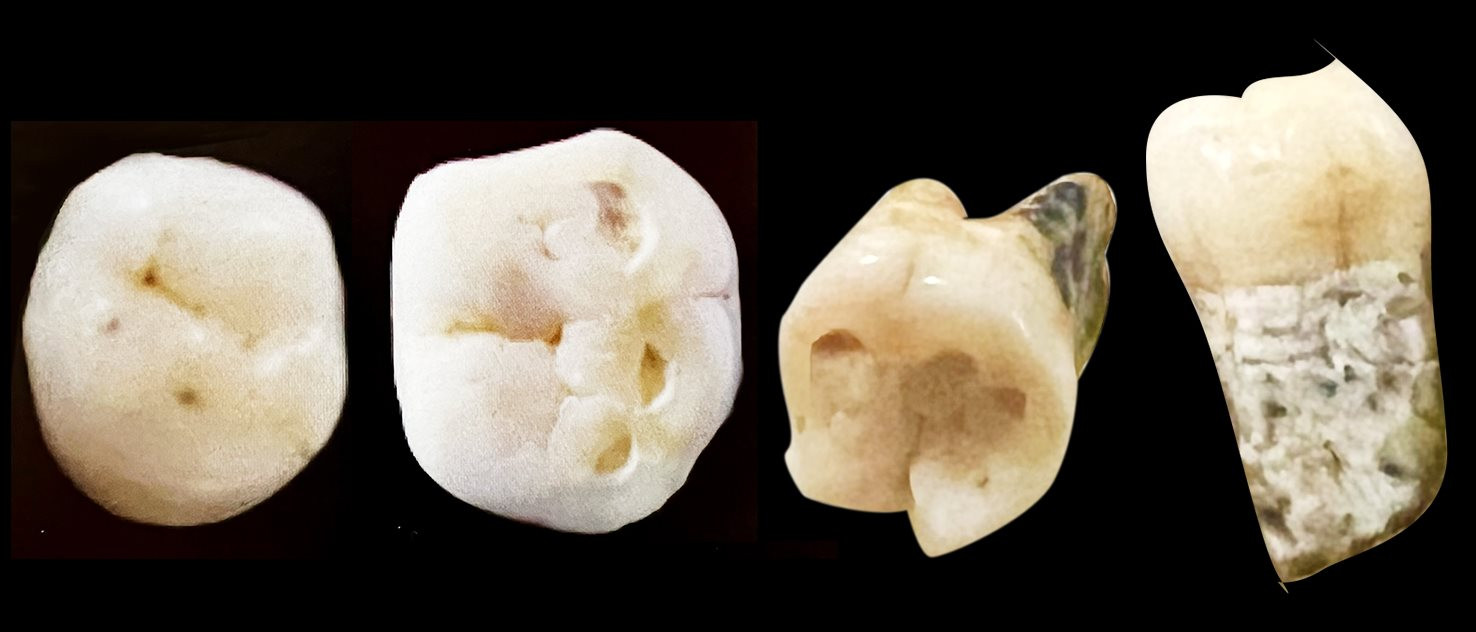
PSG.TS Nguyen Lan Cuong remembers that during the excavation at Thanh Hoa cave, he also found a section of the lower jaw of a rhinoceros, on which there was still a tooth. According to him, usually in Pleistocene archaeological sites, only fossilized rhinoceros teeth are found, never a whole section of jaw like at Nham Duong pagoda. In addition, in the cave, teeth of Indian elephants, bears, horses, monkeys, porcupines, leopards, wild boars, deer, and buffaloes were also found. "In July 2003, I returned to the pagoda and Master Mo boasted that he had just found some new fossils, including two human teeth from about 30,000 years ago - a treasure that I had been waiting for a long time", Mr. Cuong recalled.
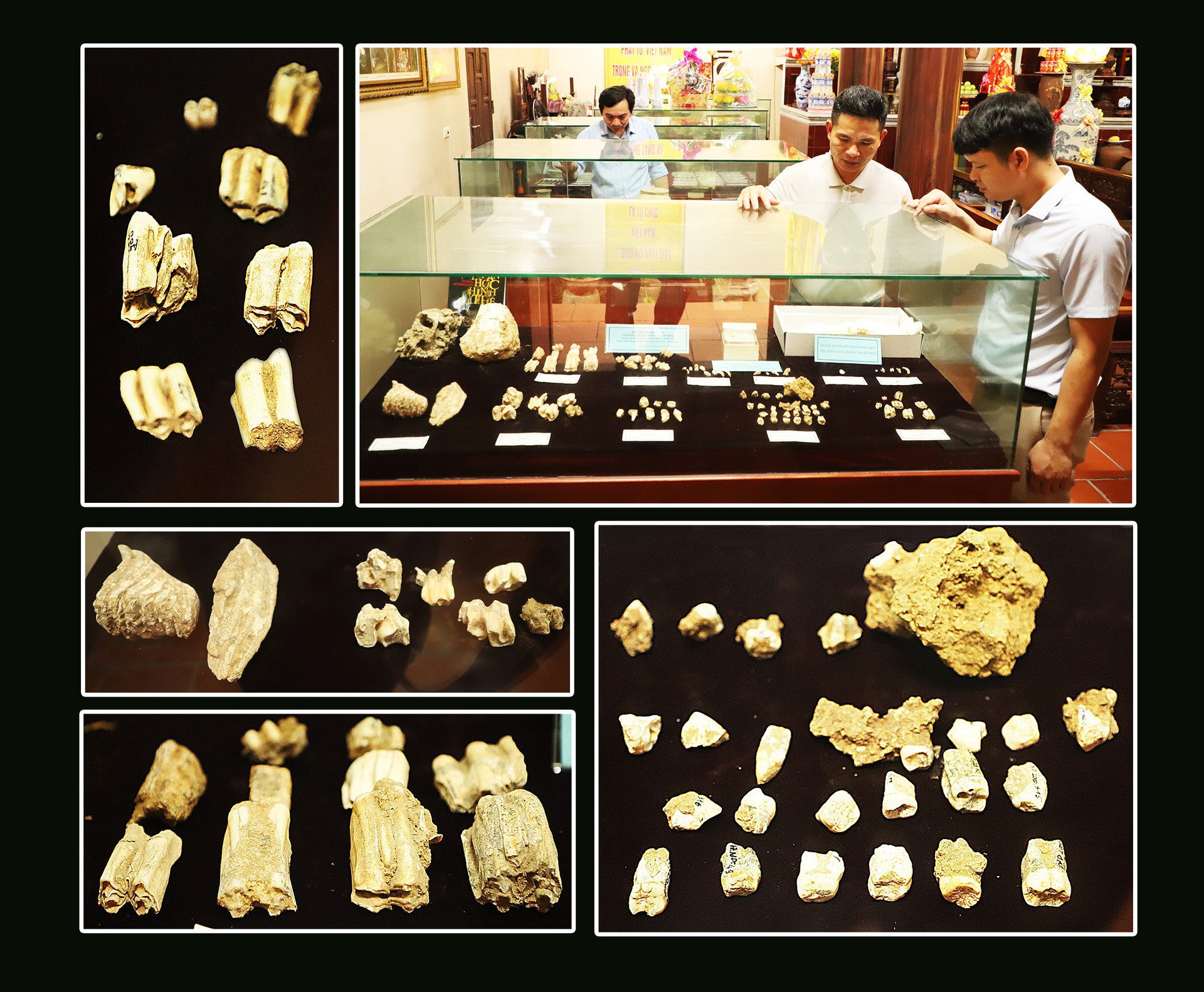
At the Nham Duong pagoda relic, archaeologists have found some artifacts from the late Neolithic period - early Metal Age. These are large stone tools, stone axes, adzes or hoes with quadrilateral shoulders. These stone tools have been roughly chiseled and shaped. In 1999, when blasting rocks in the Trung Thoc and Giua caves areas, workers and local people found many stone artifacts such as axes, chisels, stones, grinding tables, and drill cores. It can be seen that the vestiges of Kinh Mon culture at that time either belonged to the distribution area of Ha Long culture or were a cultural area heavily influenced by Ha Long culture.
Archaeologists also discovered square-heeled axes decorated with two dancing people, hunting dogs, two deer and Dong Son geometric patterns. Various types of square-heeled and round-heeled axes, pointed-heeled axes, rectangular bronze axes, balanced axes, bronze shells, bronze spears, bronze jars, bronze bells, bronze knives, bronze spears, bronze containers such as cross-heeled spades, bronze rings, bronze ladles, bronze mirrors.
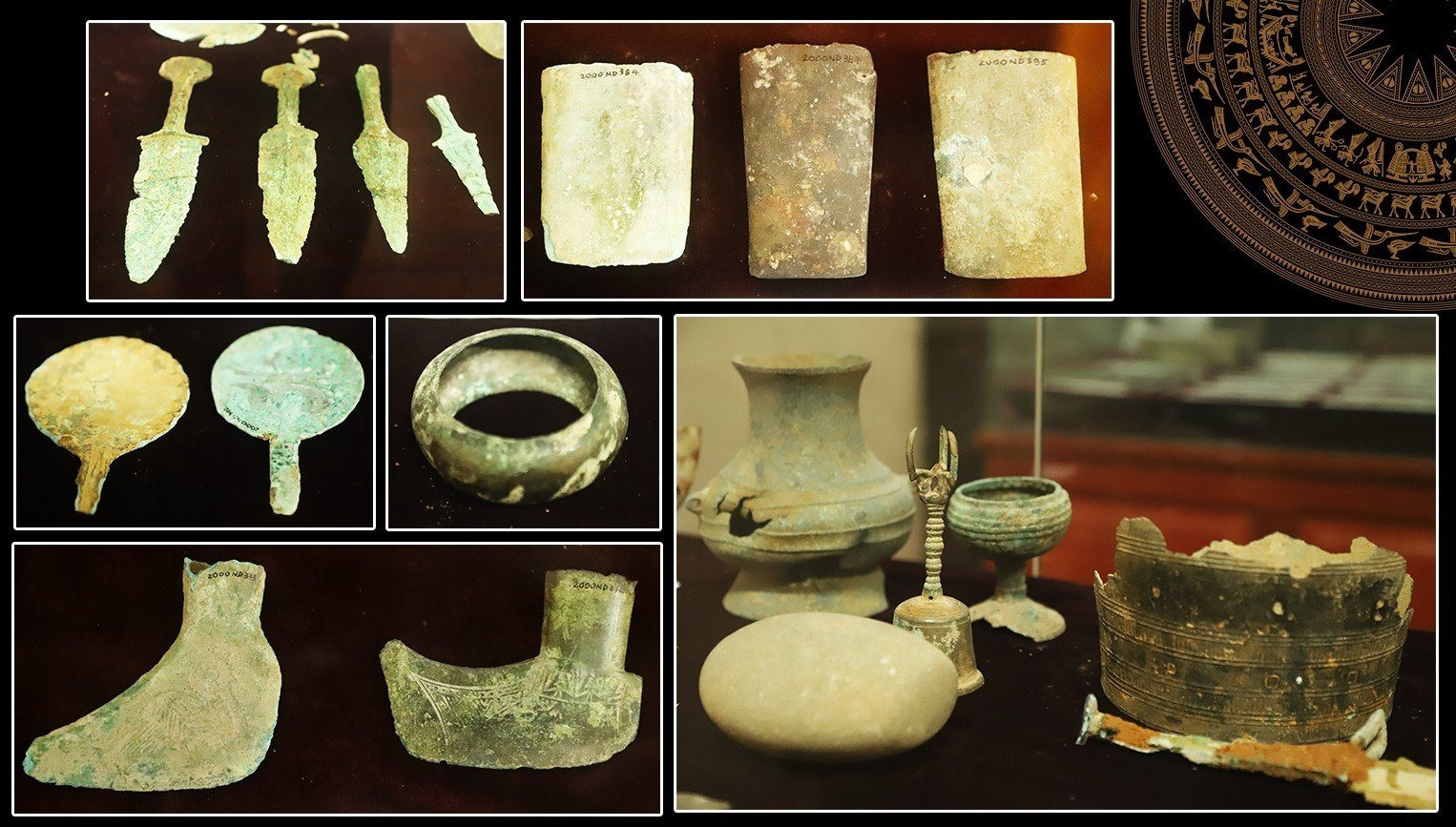
Through archaeological artifacts, we can initially sketch out some features of the material and spiritual life of the ancient Vietnamese in Kinh Mon about 4,000 years ago. Through stone relics, bones, and pottery, we can see that this was a settlement center of primitive people. Primitive people at that time knew how to reclaim land and establish settlements with stone axes and cook with crude ceramic pots. During the Dong Son culture, life here had a remarkable change. For more than 2,000 years, ancient Vietnamese documents show that Kinh Mon land belonged to the Duong Tuyen tribe of the Hung kings and the Van Lang nation. This was the first primitive state in the history of the nation. This state was based on the material foundation of the Dong Son culture. Through the relics of the Dong Son period, we can see that the residents knew about wet rice agriculture by reclaiming land with hoes, spades, bronze axes, and stone axes. They were also good hunters. Hunting had the powerful help of domestic dogs, as shown in the image of deer hunting dogs on square-heeled bronze axes, bronze spears, and bronze quail. When there was war, they also used these weapons to fight. They knew how to wear bronze rings, knew music such as ringing bells. They also had bronze jars to store valuables such as rice seeds, knew how to cook with rough ceramic pots, and used bronze mirrors for makeup. On a diagonal axe, one side had a deer image, the other side had a pelican image. These are very beautiful patterns and rarely seen on Dong Son bronzes.
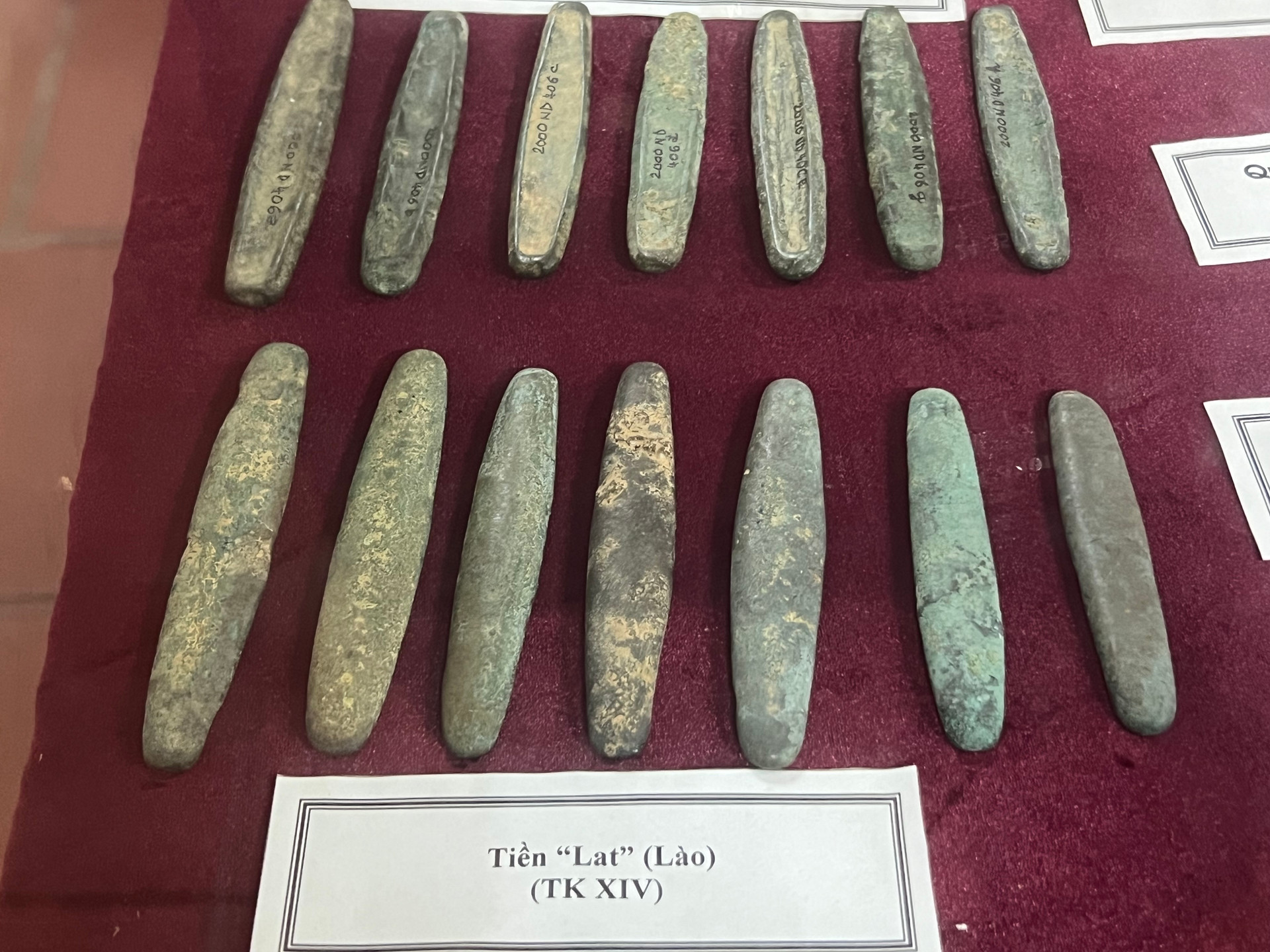
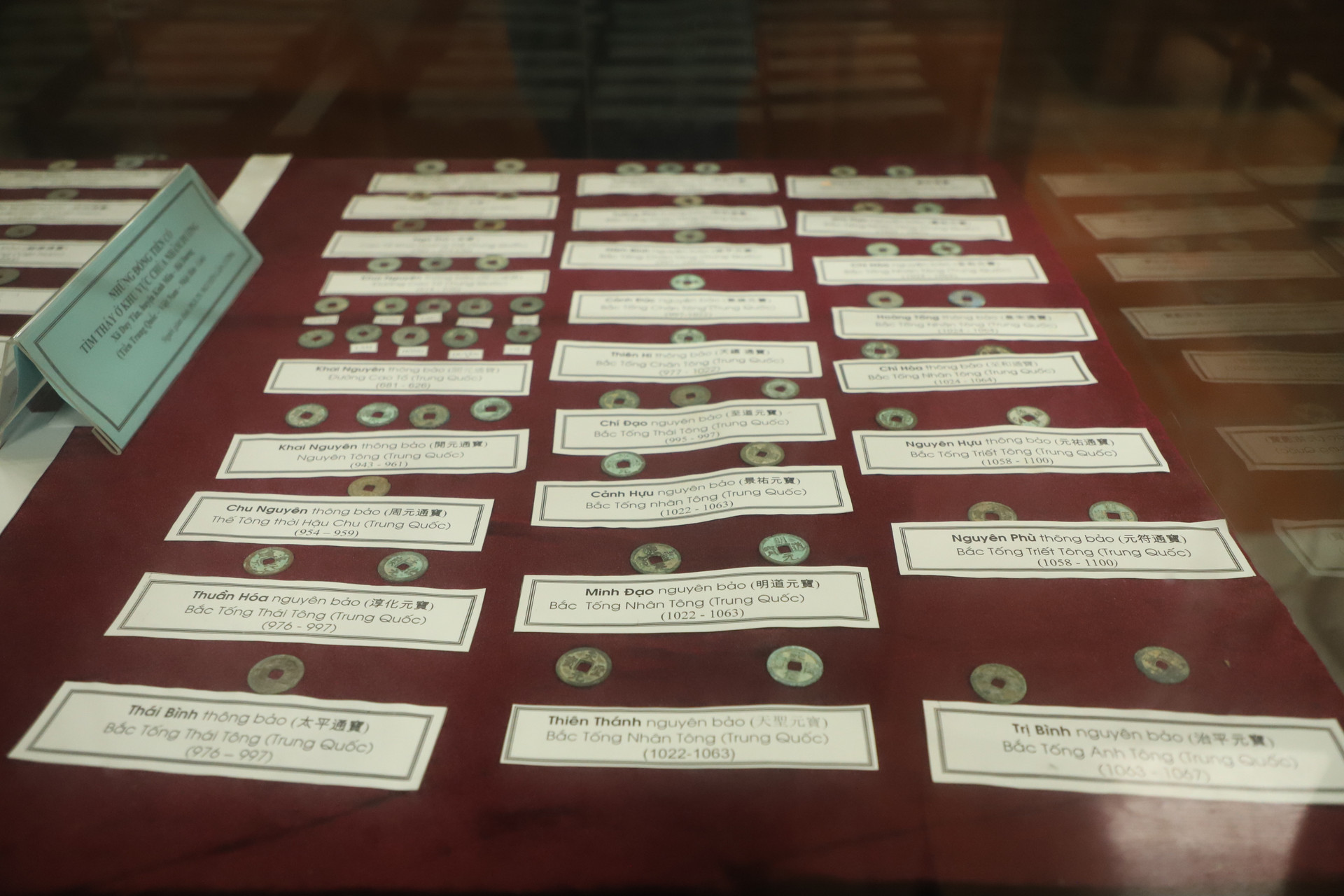
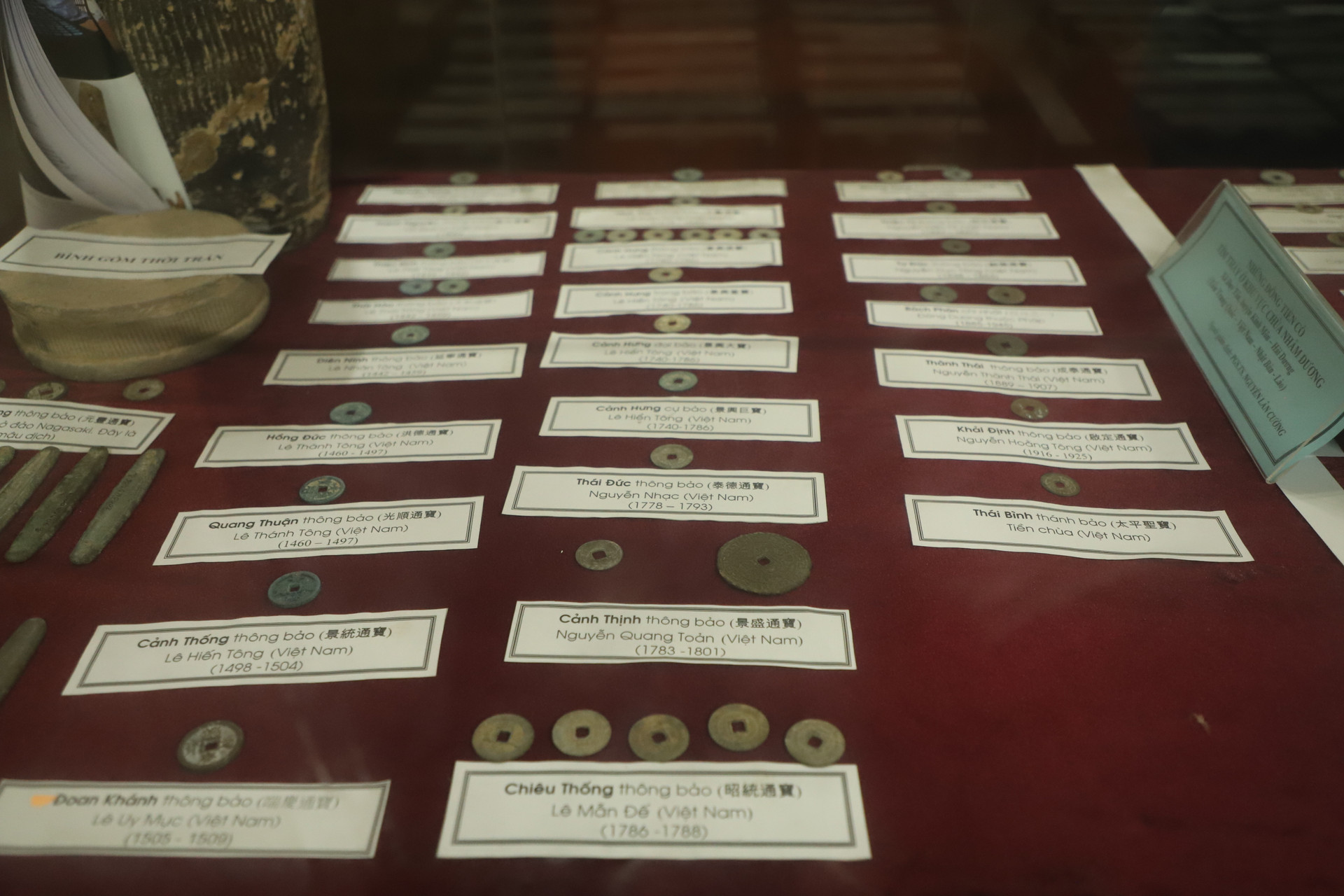
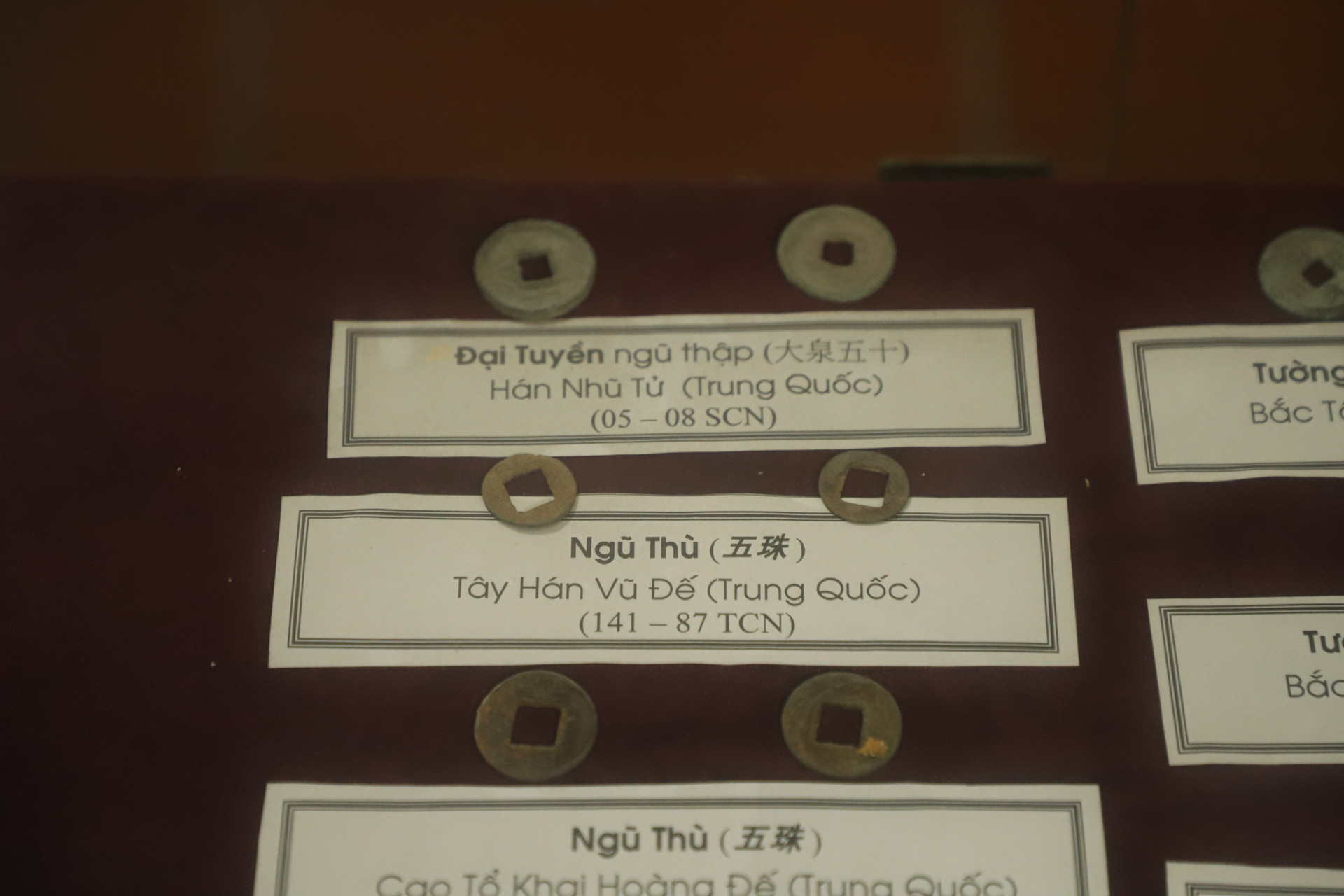
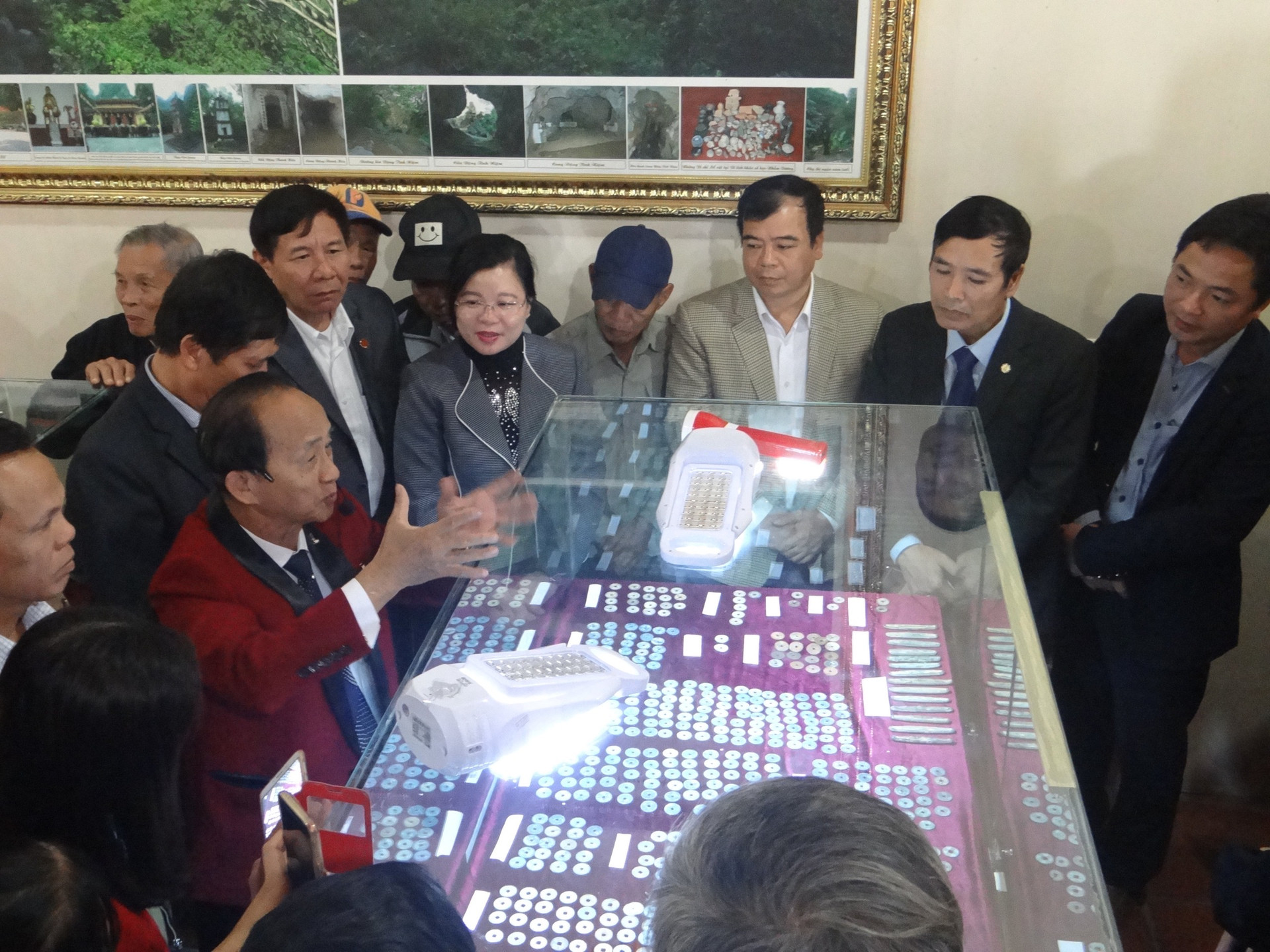
Nham Duong Pagoda is also preserving a rare collection of ancient coins. Through several excavations, Associate Professor, Dr. Nguyen Lan Cuong has studied 728 coins with 120 different types from 4 countries: Vietnam, China, Japan and Laos. The collection of ancient coins here includes some rare coins that have never been published in books on ancient coins of Vietnam such as Thien Phu Nguyen Bao from the Ly Nhan Tong period, Doan Khanh Thong Bao from the Le Uy Muc period, Tri Phap Thong Bao (a type of temple coin that has never been discovered anywhere else)... Ancient Chinese coins also have some rare coins such as Thieu Hy Nguyen Bao from the Southern Song period, Hong Hoa Thong Bao from the late Ming period. "Lat" coins from Laos (14th century), Japanese coins (17th century) are all rare coins in Vietnamese archaeological sites. “The ancient coin collection here has a rich variety of Vietnamese coins, dating from the Ly Dynasty to modern times, which is one of the rare coin collections in the history of Vietnamese monetary archaeology. With the discovery of 4 types of coins from 4 countries here, it is possible that this place was once a trading place and a commercial port because there are many large rivers around this area,” Associate Professor, Dr. Nguyen Lan Cuong commented.
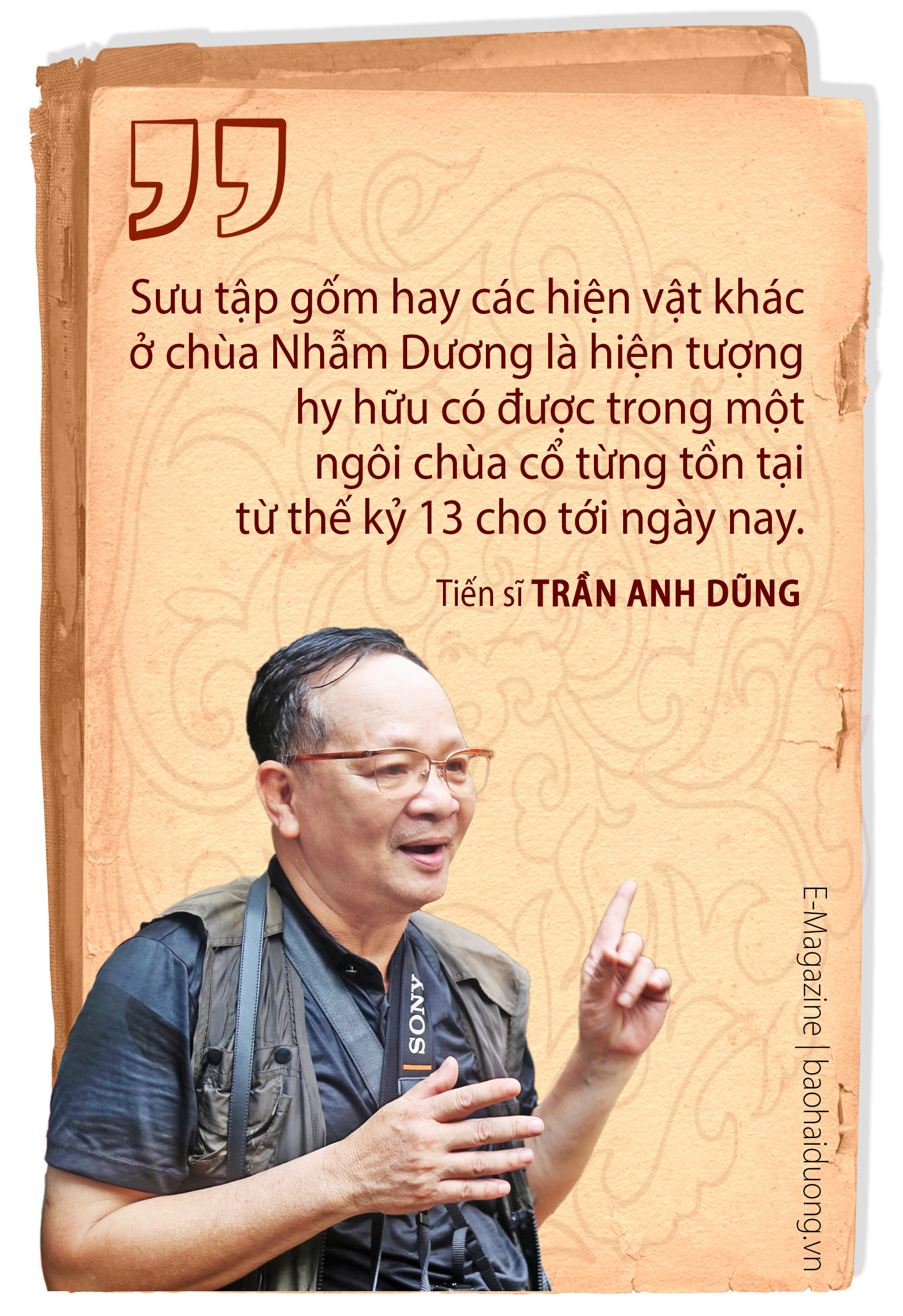
Nham Duong Pagoda also preserves a rich collection of terracotta wares, including objects made from the 1st century. In addition, this pagoda also preserves a large amount of pottery ranging from the 1st century to the early 20th century, discovered during the restoration of the pagoda, mainly found in rock niches, under the floors of caves and in the pagoda garden area. There are at least 700 pottery artifacts that have been studied by archaeologists such as pots, bowls, plates, basins, chicken-head teapots, lathe-shaped vases, lids, jars, pots... The rich pottery from the 1st-3rd centuries shows that Kinh Mon may have been a place for pottery trading in the past, on that basis, a river port was formed here. Because this was also the period when East-West trade was formed via the Vietnamese sea route. For several centuries, from the 13th to 15th centuries, pottery from the late Ly, Tran, and Ho dynasties was quite intact, Chinese pottery from the Yuan dynasty... continued to reflect that this was a bustling gateway for trade for many centuries... "The collection of pottery or other artifacts at Nham Duong pagoda is a rare phenomenon in an ancient pagoda that has existed from the 13th century to the present day", Dr. Tran Anh Dung (Vietnam Institute of Archaeology) commented.
Field surveys and excavations by experts at Nham Duong pagoda relics all confirm that the archaeological sites here are very important, not only having national historical and cultural significance but also international significance, and need to be protected and excavated to study the special values of this relic site.
In recent years, Hai Duong in general and Kinh Mon town in particular have made the most of all resources to serve the work of preserving and promoting the special values of Nham Duong relic site. The Department of Culture, Sports and Tourism is building a dossier of the intangible cultural heritage of Nham Duong pagoda festival to propose the Ministry of Culture, Sports and Tourism to include it in the list of national intangible cultural heritage. Kinh Mon town has basically upgraded and renovated the road connecting Duy Tan ward center to Tan Dan and Nham Duong relic site with a total cost of tens of billions of VND from public investment capital - town budget... Stone mining activities in this area have also been strictly prohibited. Propaganda work, raising awareness and responsibility of the people in preserving, maintaining and promoting the historical and cultural values of this relic site are carried out regularly.

Ms. Mac Thi Huyen, Vice Chairman of Kinh Mon Town People's Committee, said that implementing the direction of the province, the locality is urgently coordinating with relevant agencies and units to carry out the planning work of preserving, renovating and restoring historical relics and special national landscapes of An Phu - Kinh Chu - Nham Duong complex. In particular, the Nham Duong relic cluster after planning has an area of 344.6 hectares. At this relic cluster, according to the plan, a Buddhist lecture hall is planned in front of the right side of the inner temple to serve the research and preaching of Cao Dong Buddhism. At the same time, an archaeological museum will be built in the west and northwest of Nham Duong mountain to store and display archaeological artifacts. This museum will be connected and interwoven with the outside space to help people and tourists easily visit and research.
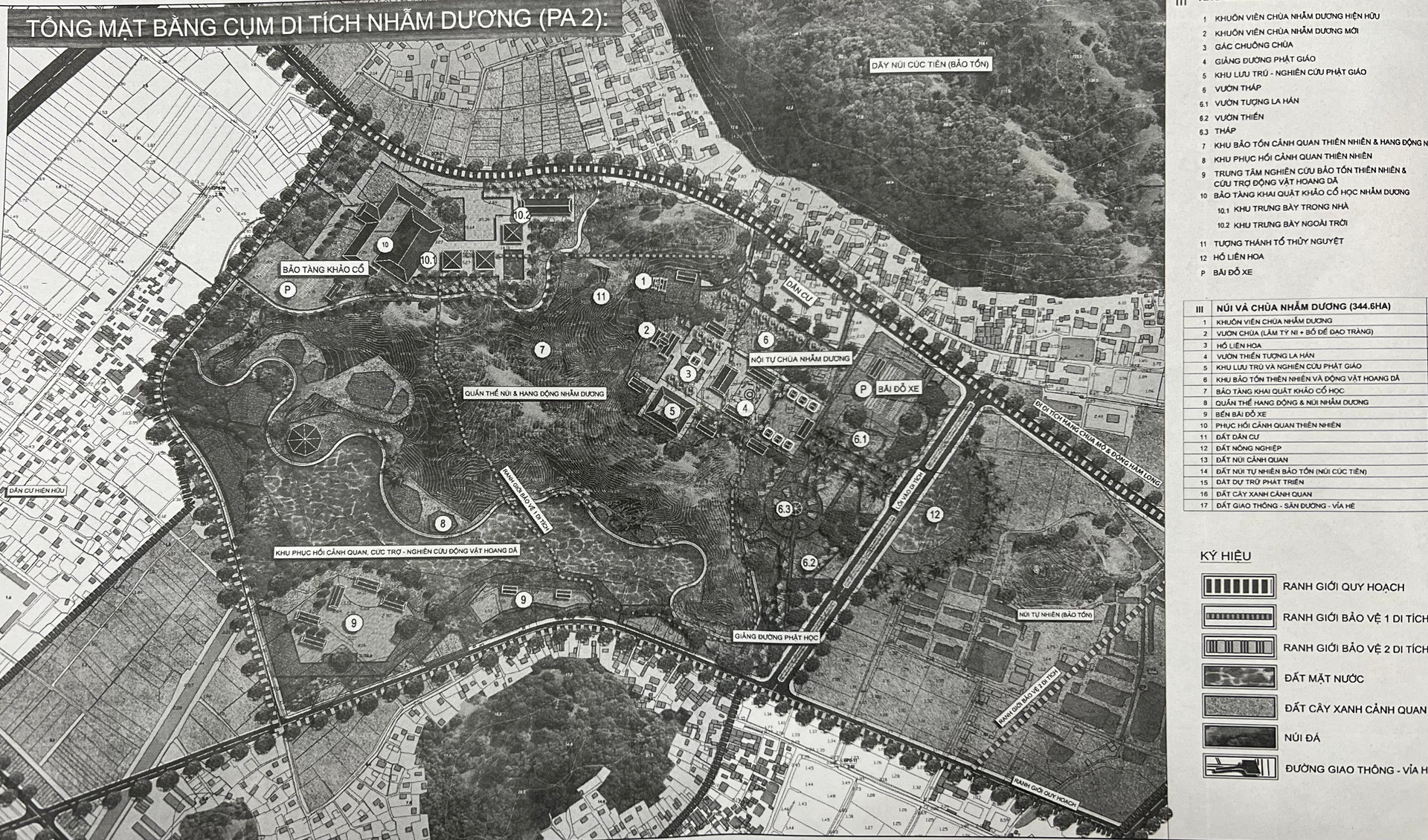
The Nham Duong mountain area used to have a rich flora and fauna system. Therefore, on the top and southern slopes of the mountain, a natural landscape and flora conservation area will be planned. The mountain slopes that were previously exploited for stone will be restored for landscape, creating biological research and animal rescue for the locality as well as the region. "When the Nham Duong relic cluster is completed synchronously, it will maximize its value, contributing to creating momentum for local socio-economic development," Ms. Huyen commented.
Content:GOING STRONG
Graphics: TUAN ANH